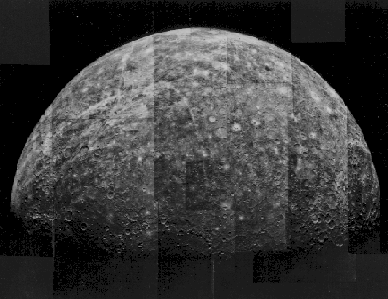Astronomy Picture of the Day
Discover the cosmos! Each day a different image or photograph of our fascinating universe is featured, along with a brief explanation written by a professional astronomer.
August 14, 1995

Mercury: Closest Planet to the Sun
Credit:
NASA,
Mariner 10